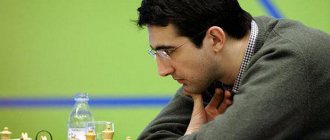People often wonder what human intelligence is and how it relates to psychology. Therefore, in this article I will explain in detail what is meant by this term.
This is a complex of abilities to learn, understand, solve complex issues and find a way out of difficult situations, as well as the ability to think. Society greatly respects this quality and recognizes its value, but does not always characterize it correctly. For many, the traits of an intellectual are encyclopedic knowledge and excellent memory. In fact, they are associated with erudition.
Definition of Intelligence
It represents something of a taste for ideas. The chain is as follows: thinking processes the life experience we acquire and accumulates knowledge, with their help new ideas, discoveries, inventions, and innovations are born. This is a thought process that is impossible without abilities. Some are given more of them, some have less. This is human intelligence. If its level is low, there will be little benefit from knowledge. Readiness and awareness are just tools that help it manifest itself. Having a lot of knowledge without the ability to use it is the same as playing the violin without talent.
What characterize intellectual skills:
- Memory;
- skills of analysis, structuring information and forecasting;
- logic;
- attentiveness;
- zeal;
- reproduction;
- flexibility, depth, inquisitiveness of mind;
- curiosity.
Genius
In some cases, when a person exhibits high intellectual activity in creative activity, it may be accompanied by what, based on certain characteristics, is perceived as genius.
If we understand the meaning of the mechanisms that form the basis of the psyche and determine intellectual potential, as well as the essence of this potential itself, we can talk about an extreme state of intellectual creativity, i.e. about genius. As a rule, genius is the degree of intellectual potential that contributes to the creation of extraordinary and particularly outstanding creative results.
The state of genius is distinguished by its characteristics of mental as well as physiological organization. And these characteristics are such that without painstaking and quite serious work, you simply shouldn’t expect any brilliant ideas and results. Among these characteristics are:
- The required level of energy and energy, depending, among other things, on the characteristics of blood movement through the vessels, metabolism and ventilation of the lungs. If they do not meet certain parameters, the human body will not have the opportunity to fully develop creative skills.
- Regardless of the level of energy and energy, a person must have a motivating force - something that will constantly push him to action and force him to stick to the chosen direction. Otherwise, a person will not even lift a finger, because he will not have any goal.
If these two characteristics are present, and their combination turns out to be suitable, a person becomes dissatisfied with the current state of affairs, which requires conscious volitional efforts to change. And when the understanding of a particular situation accumulates and reaches a critical point, that same insight occurs, called genius. If a person lies on the couch and looks at the ceiling, he better not count on any revelations.
What is genius? First of all, this is a constant stay in the process of comprehending some creative idea, incessant brain activity that prevails over everything else. It does not stop even when a person is sleeping, because it is of such great importance to him that it receives nourishment from most existing areas of perception.
This activity does not appear on its own or out of nowhere. This is a consequence of painstaking study and thinking about a certain problem or situation that plays the most important, almost the main role in a person’s life (one of such situations may be a state of love, when it is impossible to think about anything else).
The conclusion follows from this: in order to do truly brilliant things, it is not at all necessary to be a natural genius or to inherit some genetic traits from your ancestors. The state of genius can be achieved artificially by “getting sick” with something completely and irrevocably. This “disease” activates maximum intellectual potential, thereby leading to a state of creative genius.
We are deeply convinced that every person should develop thinking and intelligence. This should not be influenced by the environment, circumstances, or any other reasons. The only thing that should have an impact is a sincere desire to develop, become better and smarter. We wish you to have this desire, never stop at anything and, of course, collect as much information as possible about the work of intelligence and its features.
Let our article serve as another coin to your knowledge bank. We sincerely wish you good luck and achieving new heights!
We also recommend reading:
- Storytelling
- Cattell-Horn-Carroll theory
- How to become smarter: 4 types of intelligence according to Stephen Covey
- Intelligence and its development: several recommendations
- To develop or to degrade?
- Erudition and intelligence: why they only work together
- Gardner's Theory of Multiple Intelligences
- Wechsler test
- What You May Not Know About Intelligence
- Deep Learning: What is the essence of the deep learning method?
- General Intelligence Factor
Key words: 1LLL, 1Cognitive science
Types
Until now, there is no unified classification of intelligence. Only one scientist, Howard Gardner, put forward the theory of 8 varieties:
- Spatial, most developed among drivers and designers. Characterizes the ability to navigate the terrain. If you are having difficulty building a route, this is what you need to develop. This can be done by solving problems with finding a way out, painting and sculpting, and tracking the movement of objects.
- Kinesthetic, responsible for the ability to use one’s own body, dexterity, and coordination. Those who have it developed dance and work well. Sports, yoga, and physical activity will help in its development.
- Musical, gives its owners a sense of rhythm, hearing and understanding. The more a person immerses himself in music, dancing, listening, singing, the more he will improve this type of intelligence.
- Linguistic, responsible for written and oral speech, develops when studying foreign languages, reading, communicating with people.
- Logical, allows you to feel like a fish in water among symbols, signs and diagrams. Will be an excellent companion for a scientist and inventor. To improve logic, you need to solve problems, puzzles and puzzles, and build chains.
- Interpersonal, also known as social, is close to empathy. This is the ability to feel and understand people, ease in building relationships, sociability and communication. It is important for creating a family and forming friendships. He is trained at seminars, trainings, and group games.
- Emotional is needed to understand yourself, to live in harmony with your inner world. It is especially difficult to develop, therefore it requires the use of spiritual practices: meditation, purification, reflection.
- Naturalistic is associated with worldview, natural phenomena, and physical laws.
Any type of intelligence in psychology is based on the development of personality traits and determines its individuality.
Structure
The processes in our head are so complex and diverse that they are not subject to structuring according to several criteria. Comparing a talented mathematician with a brilliant composer is difficult and unproductive.
Psychologist Daria Milai
Make an appointment
J.P. Guilford presented a three-dimensional cubic model in which he identified 120 mental abilities (memory, analysis, assessment, expression of thoughts, etc.) and structured them into three components:
- Content (what we think about).
- Operation (as we think).
- Result (what the process leads to).
Some people are able to quickly draw conclusions and make decisions, others are close to flashes of insight with an instant understanding of the essence (remember Archimedes with his “eureka”), others are fixated on the assumption that came first. An intellectually developed person can live happily all his life, while thinking haphazardly and impulsively, without going beyond standards and stereotypes.
Motivation and satisfaction.
Myth 4. Loyal employees increase motivation and efficiency.
A common misconception among some managers: loyalty affects motivation. Significant HR budgets are spent on maintaining loyalty: holding corporate events, creating comfortable offices, bonuses for the New Year and March 8th. In fact, a satisfied, loyal employee (one who is satisfied with his job at the company and has no intention of leaving) will not necessarily strive to do his job most efficiently. However, the opposite thesis is also true: the most capable and effective employees are not always loyal to the company.
One of the most significant studies of the 20th century in the field of motivation is Herzberg's two-factor model (motivation-hygiene theory). According to this concept, the factors that determine the degree of employee motivation do not coincide with the factors that lead to dissatisfaction and demotivation. Factors that contribute to high motivation are directly related to the work itself: the interesting nature and content of the work itself, the presence of professional growth, the opportunity to achieve success, recognition, and the level of responsibility. The second group of factors is external to work. These factors cannot provide an increase in motivation, but can be sources of dissatisfaction: wages, company management policies, personal relationships, status and security. The strong influence of these factors leads to demotivation and dismissal of employees.
The conclusion that comes to mind is that payment itself is not a motivating factor, but an unfair payment system can lead to demotivation. At the same time, the feeling of satisfaction that arises from an increase in salary does not last long.
A small IT company focused on working with large software development and implementation projects deliberately offers new employees a reward system consisting of a high salary without a bonus. To pass the probationary period, it is necessary to show not only a high level of qualifications, but also performance. Over time, if an employee does not grow, or, on the contrary, shows negative dynamics, he may not be hired for the next project or may be asked to return to the issue of assessing his “market value” as a specialist.
“Should we completely abandon bonuses based on results?” - the managers will ask. What has been written above does not mean that the manager should refuse to regulate remuneration; on the contrary, it is necessary to create a fair system for evaluating performance and remuneration.
Main function
The value of mental abilities is that they help you think productively. Thanks to them people:
- self-realization and self-affirmation;
- achieve success and demonstrate talent;
- master new skills and gain knowledge;
- occupy a position in society.
The list can be continued by the fact that intelligence and insight from ancient times to the present day help to survive, get settled, start a family and raise children. Therefore, the main thing for which they are responsible is the ability to integrate into society, adapt and find their place, and to do this profitably and quickly. The mind protects us from dangers. Levels of intelligence in psychology are divided into:
- Short. People in this category are weak and dependent, passive and submissive. They definitely need care and support, the world around them seems complex and aggressive, and the manifestation of initiative and their own talents is meaningless and time-consuming.
- Average. Characteristic of those who have good mental abilities, independence and activity. They easily adapt to society, are not afraid of everyday problems, apply their knowledge and skills, find a social circle and the opportunity to express themselves.
- High. A special caste of “revolutionaries and wizards”, which is above adapting to the world. It is easier and clearer for them to change their environment to suit themselves than to change their own values. Of course, they are a minority.
A fair system for assessing intellectual activity
Myth 5: Financial incentives should always be used.
It is relatively easy to assess the productivity of a working plant: there is a number of parts (semi-finished products) with certain quality characteristics produced over a period. With a programmer, teacher, scientist, designer, design engineer, the situation is much more complicated.
Where to start building a system for assessing intellectual activity? The basis of managing any activity is planning. The best criterion for assessing a specialist’s performance is the indicator of the implementation of the plan created for the period.
I came across examples of quantitative indicators designed for programmers, such as: volume of lines of code, number of bugs fixed, man-hours, etc. With this approach, “you can’t see the forest for the trees,” because quantitative indicators do not at all demonstrate the value of the created result. An attempt to decompose complex intellectual activity into primitive components negates the value of measurement. In creative and innovative activities, there are multiple options for solving the same problem. One programmer can spend several weeks developing a software module, while another, using templates and developments from other projects, can create a result in hours. In this case, the result in the second case may be of higher quality, requiring less time for debugging and error correction.
If such measurable indicators actually start to be used in performance evaluation, this leads to tragic consequences: people begin to adapt their activities to correspond to such metrics - writing more code (copying modules instead of optimization), engaging in perfectionism by identifying and eliminating minor errors, while increasing its “effectiveness”.
Separately, it should be noted that material incentives in intellectual activity according to the principle “if you do this, you will get that” destroy this activity itself, reducing the level of internal motivation. There are several thousand experiments conducted to confirm this. For example, amazing findings were obtained in a study by Sam Glucksberg (Princeton, USA). The experiment showed that students who were offered financial rewards (incentives) for performance completed the creative task longer and worse than those students who were in the control group and did not receive financial incentives. In a similar experiment on creative problem solving, increasing the reward only made the results worse!
Conditional incentives can be successfully used only under certain conditions: in “technological” and regular tasks (sales, production, service), where the technology for performing the task is known, speed and accuracy of execution are required. The presence of a financial (external) incentive, in this case, usually allows one to demonstrate better results.
Performance evaluation is the most important management tool to use in creative professions. At the same time, a financial bonus does not necessarily have to follow based on the results of the evaluation. Feedback in this case is itself a motivating factor. The basis for the assessment, as I noted above, is the plan that was agreed upon at the beginning of the period before implementation, and in the creation of which a specialist took part. This is a kind of mini-contract concluded between a manager and an employee, in which the parties agree to create a certain result with pre-agreed characteristics. The ability to negotiate an outcome is the core value of this approach. Figure 1 shows an example of an agreed plan for indicators with an employee for a month in the software “1C: Management by Goals and KPIs”
Figure 1. Employee dashboard
It is also important that the planned result is not achievable automatically. It is necessary to lay down a certain “challenge”, some kind of intellectual challenge to the employee’s abilities. Solving complex and interesting problems is a matter of professional pride, which should be present in any self-respecting professional.
“I fire people who have no professional pride without mercy and I advise you to do so. Be sure to make the metrics transparent and understandable to everyone. The motivation to achieve results is within us, guys!” — writes the company’s CIO, specializing in high-risk software development projects.
An equally difficult question arises - what should become the standard, the norm when planning the expected result? Benchmarking (studying the experience and results of other industry enterprises and competitors) will not help with this. So, when determining a plan, you need to make a comparison with the results not of others, but of the employee himself. But with “yesterday’s” results, his past successes and achievements. For example, previously he could complete such a problem in a day, now in 4 hours, tomorrow he might solve it in 1 hour. Such an assessment is necessary, on the one hand, for the employee to receive feedback regarding his development dynamics as a specialist and professional, and on the other hand, to determine his “value”, “cost” both for the company and in the labor market.
“But what to do with those who show a low level of efficiency - you ask - should we really turn a blind eye and put up with losses?” In no case! You should always carefully study the reasons for poor results. Perhaps the employee needs training, or plans were initially set that were not achievable, or there were temporary personal reasons (illness, family problems, etc.). If all the conditions have been created for an employee to achieve his goals, however, he regularly does not achieve them, you need to boldly part with him and look for someone who will take his place. The corporate policy and culture of dismissal based on poor performance is a much stronger incentive than attempts at contingent reward. This tactic has a serious impact not so much on the person you are deciding to fire, but on those who remain on the team. In other words, you, as a manager, are telling the team: “There is no room for mediocrity in our team.”
Individual characteristics
The traditional concept in psychology distinguishes the classification into three types of intelligence:
- Innate, which cannot be learned and instilled.
- Social-behavioral, which can be traced in actions and statements
- Assessable, it is measurable through psychological tests.
People differ not only in the presence of abilities, but also in their qualitative characteristics, a set that is characteristic of the individual. It is impossible to say unequivocally that a talented artist will be the same in dancing. But the fact that differences in the level of mental activity are noticeable almost from birth is possible.
Face-to-face consultation
What are the features and advantages of face-to-face consultation?
Find out more
Skype consultation
What are the features and benefits of Skype consultations?
Find out more
If a child shows curiosity about the world around him, causes a lot of trouble by unwinding toilet paper, knocking over food, or dragging a domestic cat by the tail - rest assured, this is a sign of high intelligence. But the quiet one, with whom, according to the parents, they were lucky, is unlikely to stand out with a high level of IQ. To evaluate it correctly, assessment techniques are used in the form of tests with different tasks for different age categories.
What does intellectual level depend on?
We receive a certain set of qualities from birth, by inheritance. It is impossible to influence them. But we are talking about only half of the skills. The other is acquired during growing up and depends not only on natural data: the mobility of neurons, reaction speed, the nature of the nervous system, but also on the social environment in which the personality develops.
The emotional connection between the child and mother is of particular importance for the development of mental abilities. Children who are surrounded by love, affection and care show better results on intelligence assessment tests.
Age differences
Measuring intelligence in the same person at different ages will give interrelated results. That is, if a child at 5 years old was distinguished by intelligence and intelligence, indicators of brain activity. most likely to remain high at 20 and 40 years of age. However, a 100% guarantee cannot be given.
For example, Pascal, being 13 years old, participated in meetings of the academic council on mathematics, and Einstein at the age of 15 was expelled from school for poor performance.
Comparing the indicators of different age groups, we will see certain patterns:
- the coefficient increases until the age of 17-18, slowing down during transition periods when the brain is “busy” solving other issues;
- after 20 years, development slows down significantly;
- logical, analytical and arithmetic potential is revealed by the age of 30;
- medicine is easier at the age of 40-45, psychology after 50;
- All years are submissive to art; researchers have not established restrictions.
An interesting fact is that there is no obligatory regression of intellectual activity. Of course, in older people, physiological processes affecting the cerebral cortex are disrupted, but a person gains important life experience that helps him apply the knowledge that he has accumulated.
Gender differences
Although the stereotype about the huge difference in mental abilities of the stronger and weaker sex is constantly discussed in society, no one has yet been able to scientifically substantiate the existence of an “intellectual gap.” Indeed, the average level of intelligence is approximately the same for men and women. The difference is observed in the following aspects:
- girls under 15 develop much faster than boys;
- Males are better able to shine with mathematical talents, while women are distinguished by the development of speech, emotional activity and creative skills;
- The priority of the fair half is non-standard thinking.
Three level system
The first level forms a set of functional mechanisms of cognitive abilities. This is natural, non-verbal intelligence. The effectiveness of the functioning of the natural level of intelligence in comparison with others, determined by the characteristics of the ENT subject, consists of two main indicators:
- degree of expression of individual cognitive abilities;
- the degree of connectivity between them.
In its pure form, it is difficult to single out the work of this particular level; we can only talk about a certain predominance or tendency to predominance in certain cases of the natural basis of intelligence, for example, when a simultaneous image of the surrounding reality is formed, i.e. looking, listening, measuring, comparing tones, halftones, shades, etc. (in the description of the stages of the formation of a sensory image, these are the first and second stages: finding an object and distinguishing it, highlighting certain features in the object, i.e., up to perceptual acts), when the subject remembers and reproduces directly and involuntarily, as well as when thinking arises “ to words”, guess, sudden insight, instant understanding, i.e. insight, creativity. Moreover, it is an involuntary, involuntary work of secondary images, that is, the turning, overturning or transformation of old images and the emergence of new images without conscious control over this process. Finally, it is the unconscious imagination of mental activity on something. Moreover, it is at this level that the origins of intuition should be sought.
The natural level of mental activity is difficult to control. Natural intelligence manifests itself in humor, unexpected metaphors, new ideas, trains of thought, etc. The qualitative originality of natural intelligence in terms of behavior and activity manifests itself in different ways: from the insight of a designer to the instant comprehension of harmony, meaning, individuality or disharmony of an artistic image, the image of an artist, etc.
The second level of intellectual activity is due to the emergence of a system of operating mechanisms of cognitive abilities. The effectiveness of this level of intellectual activity will vary depending on the form in which the subject weaves information into his experience: in the form of concepts, images, associations, with the help of specific examples, etc. Thus, the second level of intelligence represents the unity of operational mechanisms and the system of ideas that a given subject possesses. The productivity of the second level of intellectual activity (verbal, conceptual, logical intelligence) is determined by the following indicators
- A variety of ways to process information;
- degree of proficiency in these or any other functions;
- The breadth and depth of the representative image of the individual (the image of the individual’s world), i.e. degree of organization of the subject's knowledge
- Type of dominant level of information processing: conceptual, associative, figurative, visual, etc.;
- The share of “participation of concepts” in the process of presenting new information by a person.
The third level of intelligence is the regulation of mental activity. Each known method of processing information has its own structure, which can be described by a system of actions: Goal setting, orientation, decision making, foresight, planning, control, evaluation and correction. It is internal regulation that forms the basis for regulating activities. Internal regulation is ensured by external regulation: needs, motives, sense of duty, self-concept, volitional qualities and emotional reactions.
Diagnostics
Intelligence studies are carried out on the basis of various methods and techniques. All of them are based on two principles: testing and experimentation. For example, logical thinking and pattern identification skills are revealed using Raven's progressive matrices. Amthauer tests specialize in orientation in professional activities. Both the first and second technologies are developed for people of different ages. To evaluate a child, the Goodenough-Harris method is suitable, which gives an assessment based on a child’s drawing. All these developments are decades old, they are unified and give average readings.
Ask a question
“Effective” indicators for assessing intellectual results.
The passion for measurable indicators leads to tragicomic situations, for example, when the work of an accountant is measured by the number of documents processed, the labor protection service by the number of accidents that occurred at work, and designers by the number of advertising layouts made, without paying attention to quality. In my opinion, it is impossible to evaluate human activity solely on the basis of quantitative (measurable) indicators. And when it comes to assessing creative and intellectual activity, it is even more impossible to do this without “qualitative” and “subjective” indicators. Qualitative and subjective indicators in our understanding are: a plan of tasks (verified indicators - Fig. 2), from which an employee’s work plan for the period is formed, and performance standards (evaluated indicators - Fig. 3), determined by the degree of compliance with internal regulations, requirements and restrictions . In other words, we supplement KPI management with a set of qualitative (tested and evaluated) indicators.
Figure 2. Example of a task plan
Some point out that this increases the degree of subjectivity, which the manager so wanted to get away from. I would like to object to this - is there really no subjectivity in KPI management? In my opinion, there is no less of it: the choice of KPIs themselves, the determination of planned values, the method of calculating the indicator, the choice of available methods for achieving results - everything is determined by the person.
In intellectual activity, more attention is paid to the subjective component, and the role of the manager in summing up the results is undoubtedly higher. Qualitative indicators (if applicable) should be complemented by quantitative and measurable ones. Then the performance assessment will be comprehensive and fair. It is obvious that the manager who is involved in determining quality indicators (tasks and standards) has an additional burden. But in practice, we can say that the employee himself successfully copes with the formation of a task plan, and for assessment according to standards, the requirements can be described in detail in the regulations, and internal experts can be involved in summing up the results.
Figure 3. Example of assessment according to system administrator standards
When implementing a target management system in the web studio with which we collaborated, for some time now the performance of developers began to be assessed using a set of quality indicators. According to the head of the web studio, Dmitry Maslov, “since then, everything has changed dramatically: the same people, the same programmers who missed deadlines in the past, began to manage to complete all priority tasks during the planning iteration.”
Recommendations for increasing the coefficient
5 practical tips for training your brain activity and increasing your IQ that you can use every day:
- Challenge your brain, solve math problems, learn foreign languages, learn to play a musical instrument.
- Talk to educated people. By having a conversation and understanding the way smart people think, you will benefit for yourself.
- Play computer games that require strategy development and train your reactions.
- Read books, it develops vocabulary and erudition.
- Play sports, lead a healthy lifestyle.
Conclusions.
To summarize, the basic techniques for managing a team that creates an intellectual product can be summarized as follows:
a. Identify and recruit intrinsically motivated employees. Teach and develop their professional skills.
b. Form ambitious goals, distribute these goals among the team, carefully and carefully monitor the degree to which each individual achieves the goal. Use qualitative indicators for assessment, strive to abandon quantitative ones.
c. Study the reasons for success and failure. Celebrate outstanding successes.
d. Do not try to stimulate employee activity and efficiency with financial rewards. Give employees the opportunity to compare their results with previous ones.
e. Study changes in employee motives and eliminate demotivating factors.
f. Always fight mediocrity - fire those who are not able to regularly produce high-quality results.
Emotional intellect
The concept of IQ includes the ability to distinguish between emotions, understand what motivates other people, what they want, what they strive for and what they achieve. It is he who helps manage his own and other people’s feelings to achieve goals.
Our mind can be roughly divided into two halves: rational, which is responsible for cognition, thoughts, conclusions, and impulsive, devoid of logic, but no less influential. Ideally, we should balance and make friends between these parts.
The IQ component is character. Emotional appearance includes skills:
- believe in yourself;
- sympathize;
- control emotions;
- be able to distract yourself from unpleasant experiences;
- strive for a goal;
- find motivation.
Social intelligence
It helps to correctly interpret the behavior of others and build relationships between people. The better it is developed, the more adapted you are to life in society. If this part of mental activity is highly developed, it will not be difficult for you to predict the reaction of your interlocutor or immediately make a judgment about someone without thinking for a minute. It is more a gift of accommodation than of deep and thoughtful understanding.











